From the unmistakable house designed by Antti Lovag and purchased by fashion designer Pier Cardin to that of sculptor Claude Costy for artist Jöel Unal, passing through the one of architect Graham Birchall in Australia.
Bubble architecture has grown to become almost a manifesto of modern architecture, because it encloses in a single utopian expression technological progress and a new vision of traditional architecture.
Its origin can be traced back to the first inflatable, the hot air balloon patented by Joseph-Michel and Jacques-Étienne Montgolfier in the 18th century. The American engineer Walter Bird later gave inflatables a spatial connotation: he invented the 'radomes', structural and weather-resistant outer shells that protected the radar antennas of the US Army.
From here on, the theme of bubble architecture became popular with the creation of greenhouses, inflatable sheds and pool covers. In the late 1950s, Frank Lloyd Wright collaborated with the United States Rubber Company to develop a unique and experimental project called "Fiberthin Air house": it used vinyl-coated nylon to create accessible living spaces.

But not all Bubble Architecture are inflatable, in some cases they are real concrete and brick houses. Below we have selected 10 projects, balanced between architecture and sculpture, with rounded and playful shapes.
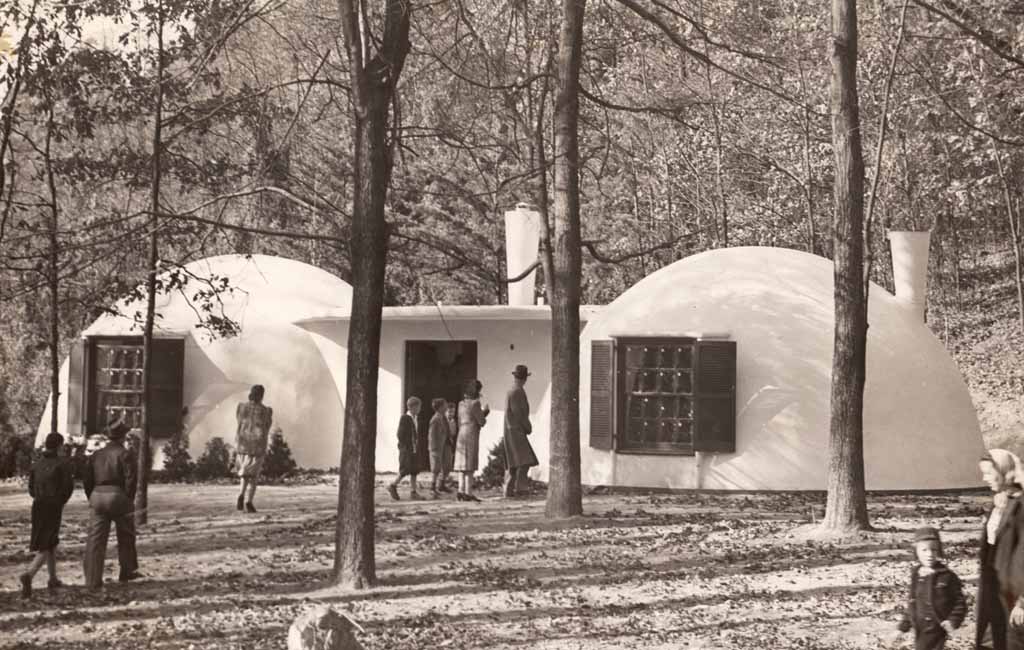
In the 1940s Wallace Neff designed the Bubble Houses, also known as Goodyear Balloon Houses. They were four bubble or aviation houses designed and built at the Wigwam Resort in Litchfield Park, Arizona. They were demolished in the 1980s.
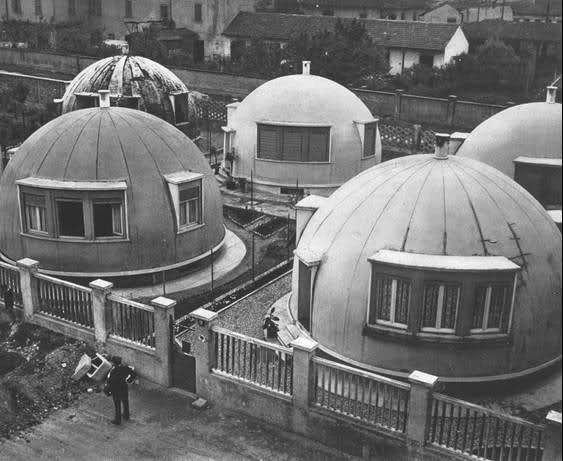
The Milanese will remember the famous Igloo houses in Via Lepanto, in the Maggiolina district. In 1946, based on a project by the engineer Marco Cavallè, real igloos were built in concrete, which were supposed to be used as houses. Cavallè was inspired by American architecture, which in those years opted for circular houses. About 50 square meters distributed on two levels, these buildings are among the most iconic architecture of the city. They were demolished in the sixties: today only two of them have survived.
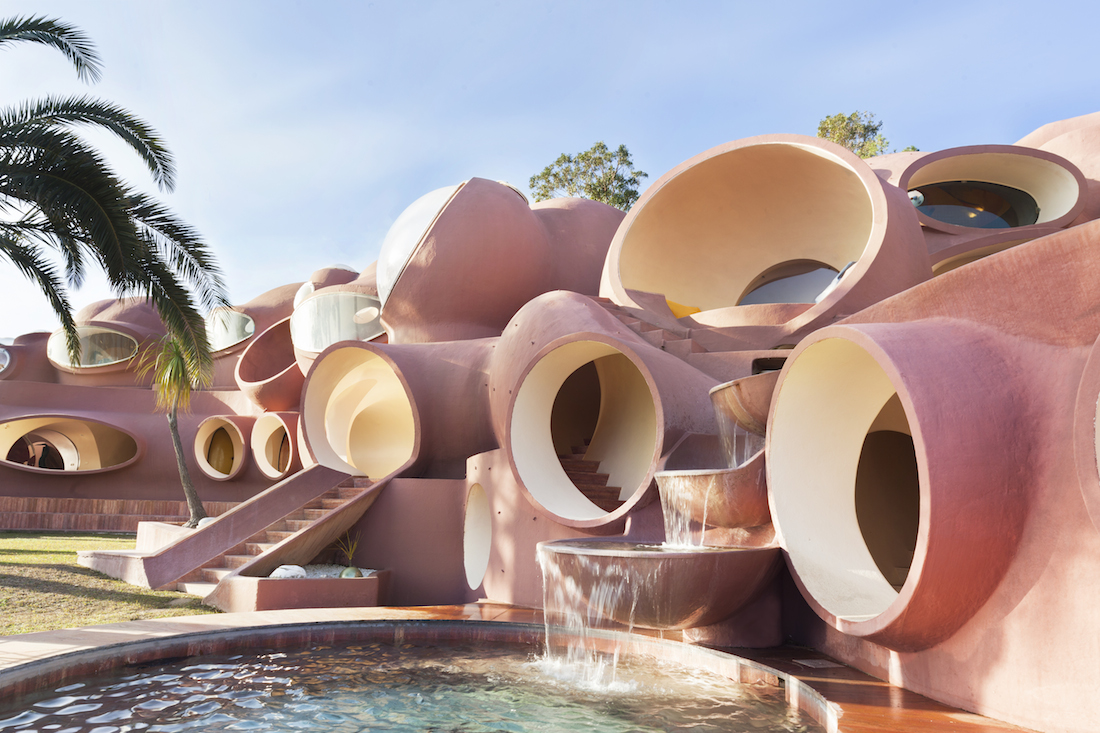
In France, the Palais Bulles (Bubbles Palace) was designed by Hungarian architect and designer Antti Lovag in the late 1970s on commission from a French industrialist and later purchased by fashion designer Pierre Cardin as a summer home. Since 1999, the building has been included in the list of historical monuments of the French Ministry of Culture. Put up for sale for an exorbitant sum and never sold (400 million euros), since 2017 it has been used as a luxury residential complex for short stays or events.

Still in France and still in the 1970s, architect Claude Hausermann designed a Bubble House in Uzès, in the Occitania region. Joel Unal, in 1972 decided to build the bubble house designed by Hausermann using a steel frame sprayed with cement.
The work was completed only in 2008, a construction site definitely protracted for years. Today this beautiful residence is for sale.
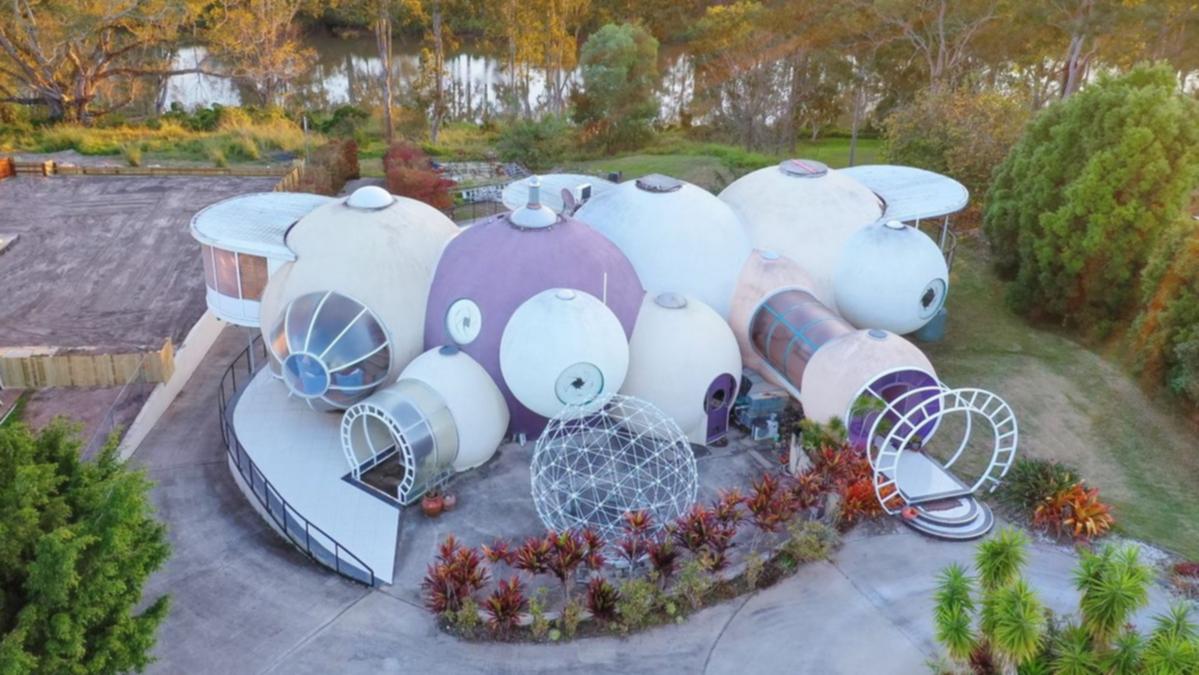
There is another bubble house currently available for purchase, it is the house of the architect Graham Birchall built between 1983 and 1993 in the town of Ipswich, Australia. It is an architecture studied in detail combined with all the comforts possible and imaginable. In fact, we are talking about a total of 20 rooms distributed on three levels.
,_Bodelva,_Cornovaglia,_Regno_Unito_2000.jpeg)
Staying within the field of architecture, but with a different use from that of living, we find the Eden Project, a tourist complex in Cornwall that houses two of the largest biospheres in the world that formally remind us of an inflatable.
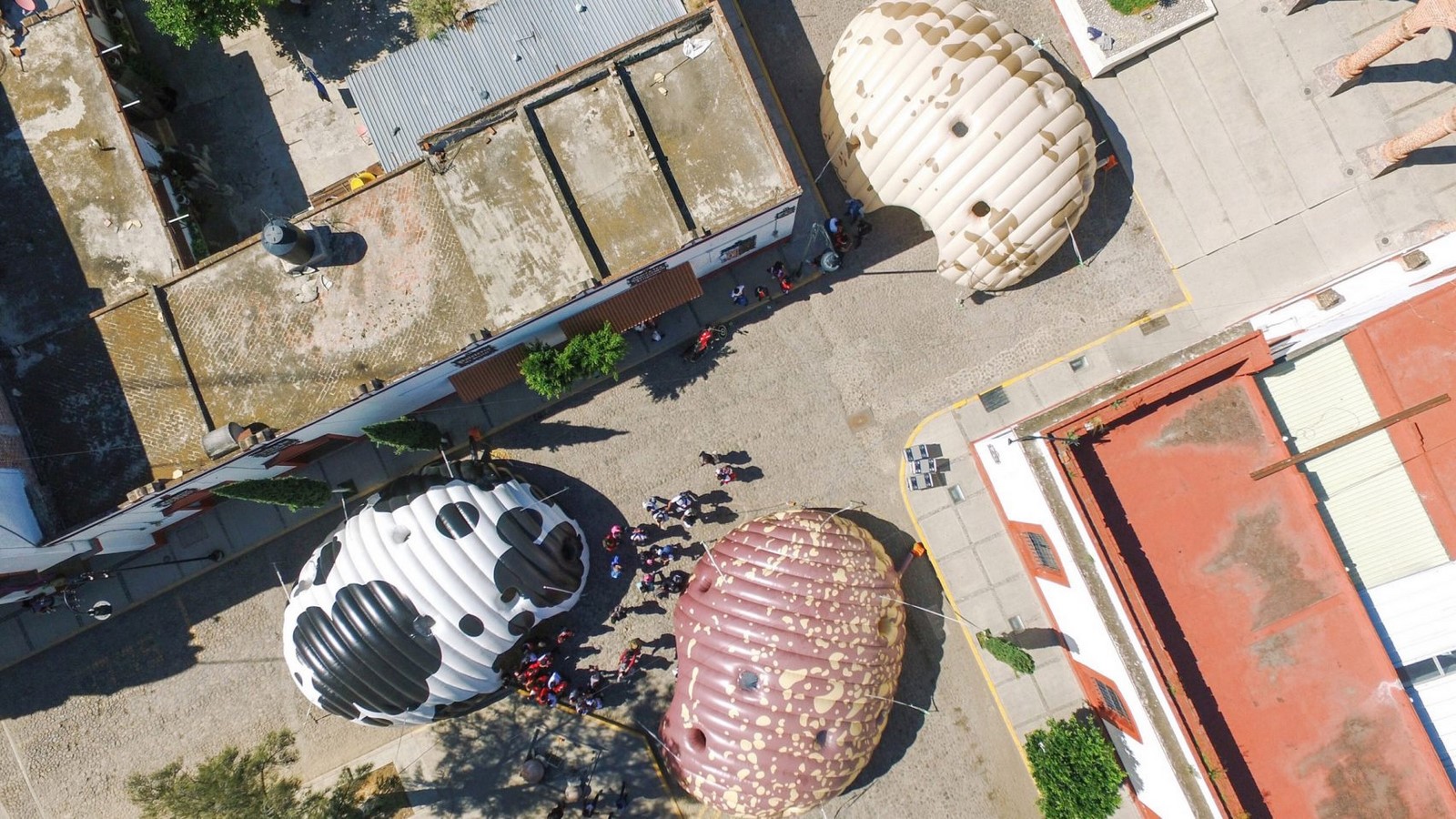
Similar to a dome but with a totally different use is Tierra Fertil, a traveling art gallery designed by Norberto Miranda. Easy to transport and assemble.
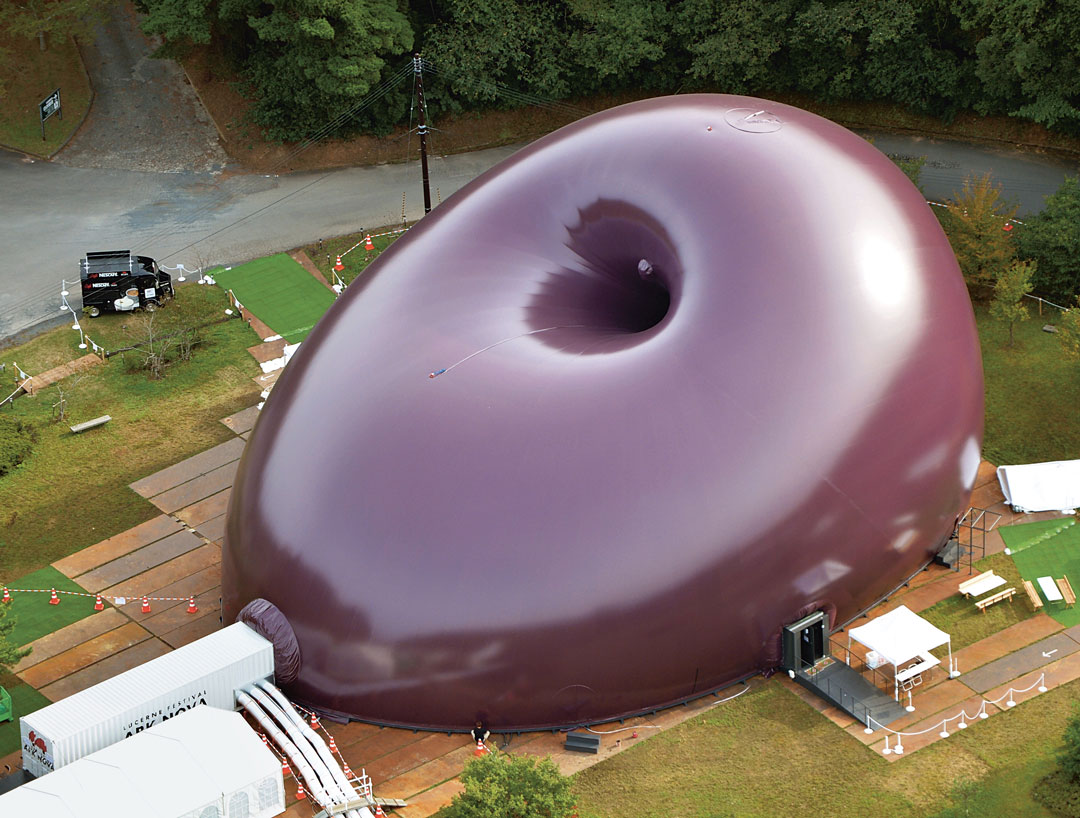
Inflatable architecture can have many different aspects and uses. Anish Kapoor and Arata Isozaki designed the Ark Nova concert Hall in Matsushima, Japan in 2013. It is an inflatable purple elastic membrane that resembles the shape of an eggplant. The interior consists of a single space equipped with all the services and equipment necessary for a concert hall.
Once again, it is the peculiar inflatable structure that facilitates transport, assembly and disassembly.
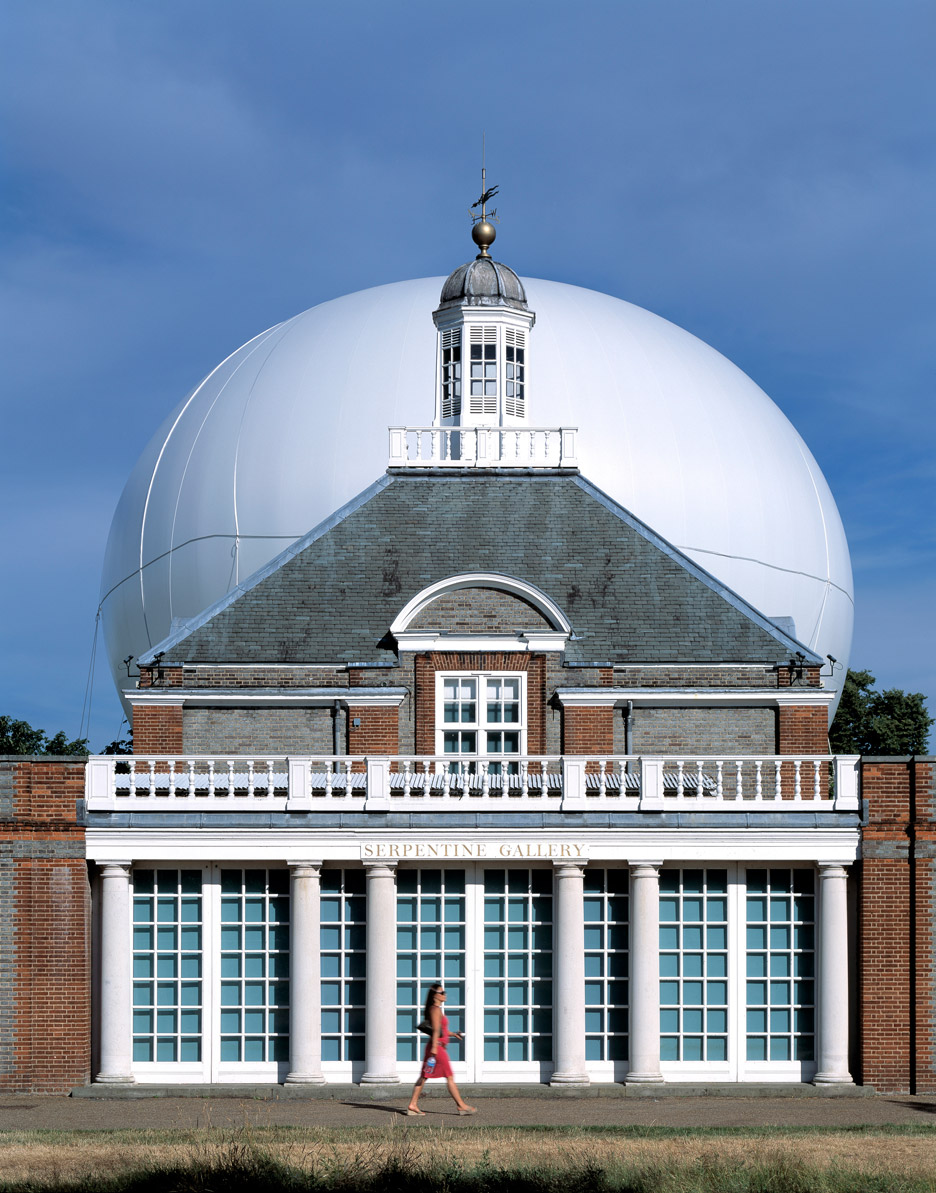
An inflatable installation, not permanent, but certainly noteworthy, is the one designed by Rem Koolhaas and Cecil Balmond for the Serpentine Gallery in 2006. The London pavilion was configured as an ovoid-shaped bubble that served as a cover for the amphitheater below. It could be raised or lowered according to weather requirements. Made of translucent material, it housed a café and spaces for lectures, television programs and public meetings.
To close this journey through Bubble Architecture, we would like to mention the traveling installation Homogenizing and Transforming World by TeamLab, an international art collective composed of various specialists including artists, architects, engineers and mathematicians, whose practice aims to explore the relationship between the individual, the world and new perceptions through art.
In this installation, brought to various places including Hong Kong, the visitor is immersed in a sea of bubbles that change color upon touch. The spheres communicate with each other via a wireless connection, transferring information to each other so that they become unified in color.
© Fuorisalone.it — All rights reserved. — Published on 18 February 2021












